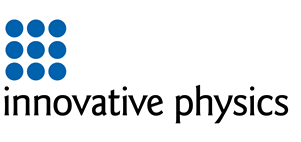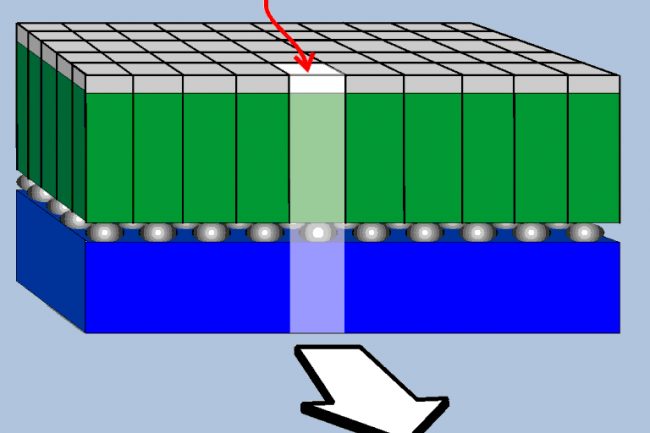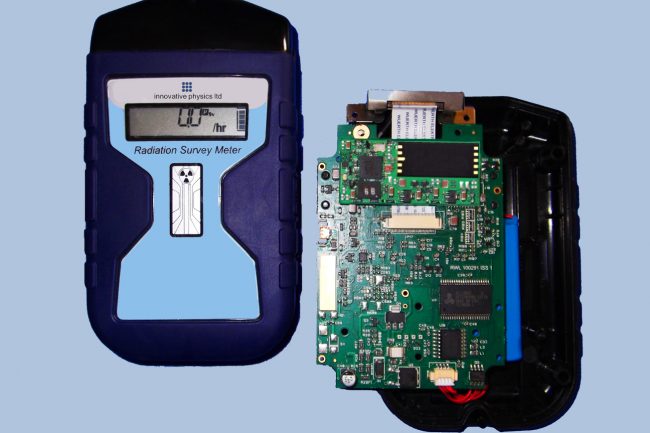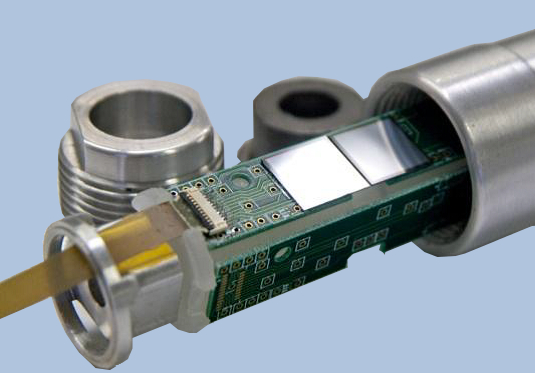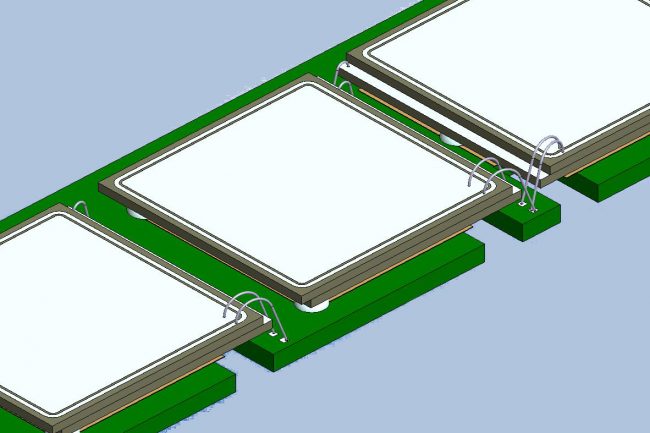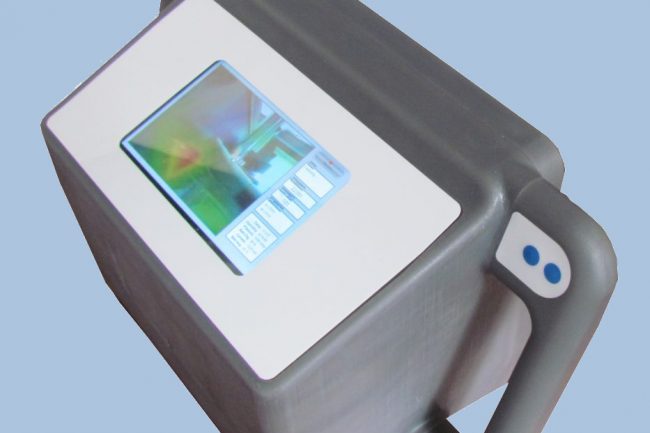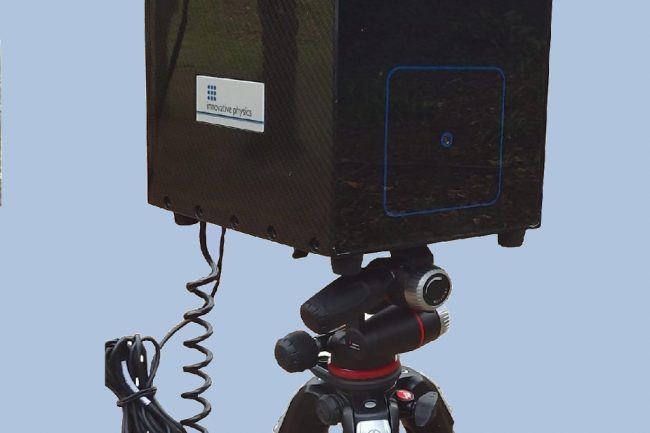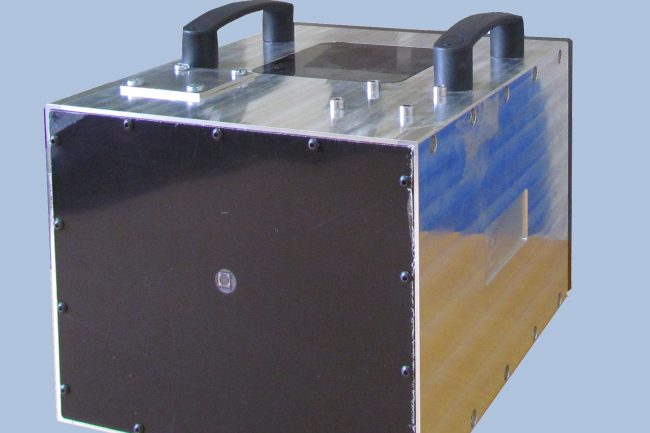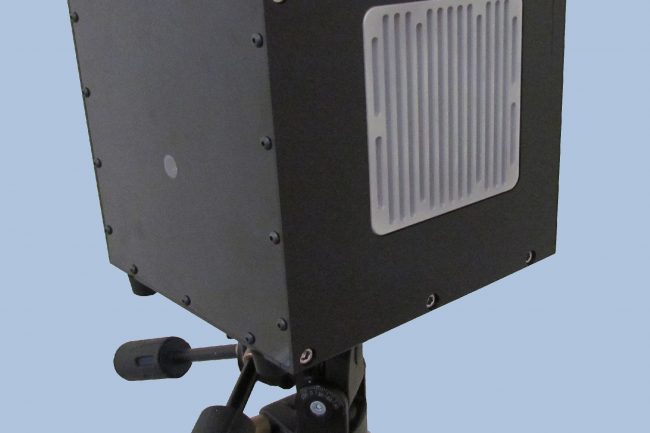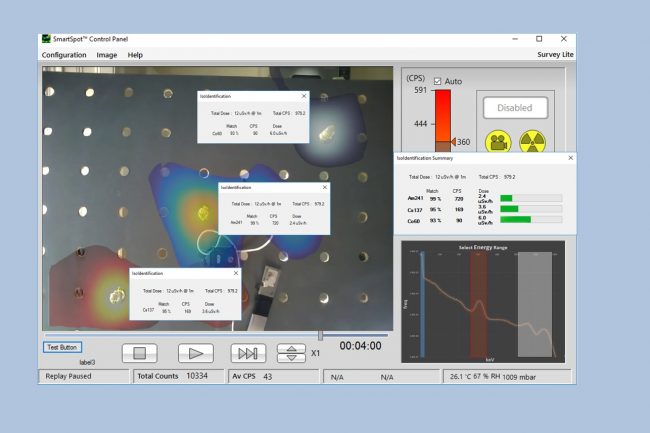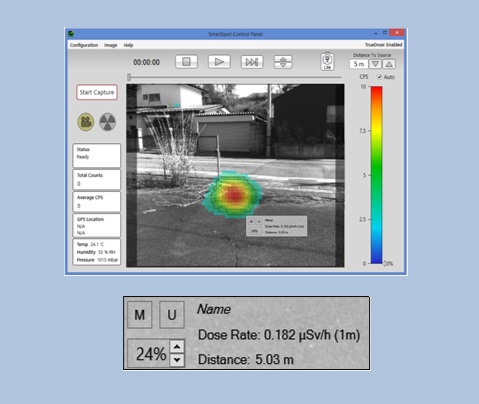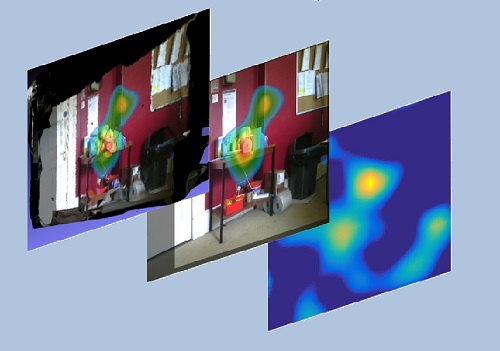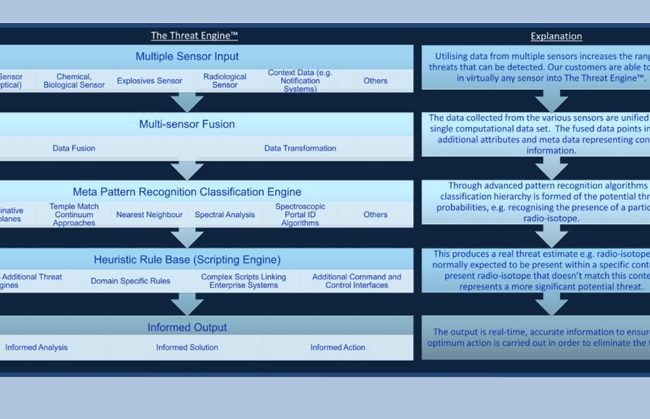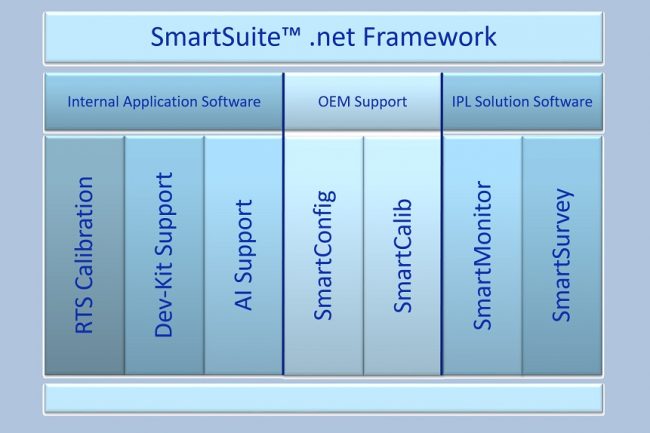Our Nuclear Services
Technologies
Fine Out MoreProducts
Combining coded aperture technology with highly sensitive detectors and overlaying onto a video image, allows the HSLs to present radioactivity in a unique, innovative way. The enhanced sensitivity, along with the rapid detection speeds make these devices ideal tools for various markets including Civil Nuclear, Radiation Protection and Health Physics.
Find Out MoreSoftware
Innovative Physics (IPL) have developed sophisticated statistical pattern recognition approaches to aid the identification of isotopes in real-time monitoring and detection situations. By using these approaches, isotopic identification accuracy and reliability is increased, reducing erroneous results.
Find Out MoreConsultancy
Find Out MoreTECHNOLOGIES
Direct Dose Detection (D3)
Direct Dose Detection or “D3” is a hybrid semi-conductor detection system, capable of converting photon energy into digital signals.
D3 combines a top substrate (either Cadmium Telluride (CdTe), Cadmium Zinc Telluride (CZT) or depleted Silicon (Si)) with a bonded lower substrate (CMOS ASIC). This technology offers a unique, versatile platform that maintains accuracy and does not saturate regardless of circumstances; therefore has the capability to detect a broad range of radiation activities.
why choose the Direct Dose Detection (D3)?
✓ the system architecture ensures on chip, off chip processing
✓ energy discrimination, identify specific isotopes
✓ flexible detector configuration
✓ minimal user training required
✓ highly portable, small, lightweight
✓ can be used for real-time, distributed monitoring
✓ wide dynamic range (0.1µS/vh- 1Sv/h)
✓ energy discrimination
✓ modular architecture
Neutron Detection
Known as the Solid State Neutron or “SSN”, these detectors are novel, versatile alternatives to He-3 technology .
Pin diodes and either B10 ( for higher gamma discrimination) or Gd (for higher neutron sensitivity) are layered alternatively on thinned silicon wafers to create a neutron packet. The number of layers can be determined by the customer (1-5 layer options). The neutron packets are then integrated into customer products, to produce highly sensitive neutron detectors.
why choose the Solid State Neutron (SSN)?
✓ High neutron sensitivity
✓ High background rejection
✓ High gamma rejection
✓ Low power consumption
✓ Easily integrated with digital interfaces
✓ He-3 replacement
✓ Uniform response in azimuth
✓ Ideal for neutron imaging
✓ Detect extremely low neutron fluxes
PRODUCTS
Hot Spot Locators
Known as the Hot Spot Locator or “HSL” range, these radiation imaging systems rapidly locate and identify radioactivity in real-time.
Combining coded aperture technology with highly sensitive detectors and overlaying onto a video image, allows the HSLs to present radioactivity in a unique, innovative way. The enhanced sensitivity, along with the rapid detection speeds make these devices ideal tools for various markets including Civil Nuclear, Radiation Protection and Health Physics.
why choose the Hot Spot Locator?
✓ Highly sensitive (5nSv/hr), see hot spots within minutes
✓ Wide Energy Range (50kev – 1.5MeV), capture multiple hot spots of different energy ranges
✓ Spectroscopy available to ANSI Standard N42.34, identify isotopes within the capture>
✓ Good Angular Resolution (<= 8 degrees), capture multiple hot spots in one image
✓ Portable, light weight devices, deployable by 1 person
✓ Instant start-up, no warm up/cooling period required
✓ Easy to use, minimal training required
✓ Review, replay and analyse data easily
want to know which Hot Spot Locator is best for a specific application? See the specifications here or contact us.
where can the Hot Spot Locator be used?
✓ Nuclear Power Plant Decommissioning
✓ Radiation decontamination and clean up activities
✓ Health Physics and Radiation Protection
✓ Radiation Training and Education
✓ Medical
✓ Radiation shielding
✓ Homeland Security and Defense
✓ Environmental Monitoring and Land Remediation
✓ Emergency Response situations
✓ Radioactive Waste and Transportation Management
Outlined above are just some of the applications the HSL range have been deployed in. As the technology evolves, more and more applications become available. If you would be interested in discussing this further, please contact us.
SOFTWARE
Isotopic Identification
Innovative Physics (IPL) have developed sophisticated statistical pattern recognition approaches to aid the identification of isotopes in real-time monitoring and detection situations. By using these approaches, isotopic identification accuracy and reliability is increased, reducing erroneous results.
Isotopes have their own characteristics spectrum, with many sharing common peaks. IPL’s statistical pattern recognition algorithms, extract features from the spectra and capture the discriminative information; unknown isotopes are then matched to the closest feature space.
This algorithmic software can be integrated into one of IPL’s existing product platforms, into a customers platform or licensed as technology.
why choose IPL’s Isotopic Identification algorithm?
✓ produces more accurate classification results
✓ quick production of results
✓ tolerant to spectral distortions compared to traditional approaches
✓ produces reliable results, reducing erroneous results
TrueDose 2D and 3D
TrueDose 2D: Enables the user to measure an identified hot spot(s). By pointing a laser range finder at the target, the distance measured is transferred to the HSL SmartSpot software, where calculations are discretely performed to provide an indicative dose rate measurement of the hot spot.
This software can be integrated into one of IPL’s existing product platforms, into a customers platform or licensed as technology.
why choose TrueDose 2D software?
✓ quick estimates of hot spot dose
✓ all in one detection and measurement solution
✓ rapid measurements
✓ easy to use
TrueDose 3D/ LIDAR: 3D analysis provides the HSL with enhanced dose information. The current HSL offerings provide 2D images, with a video image superimposed with a gamma image. LIDAR, provides an additional 3D layer, which combined with the video image and gamma image displays hot spots that relate to dose in the field
This algorithmic software can be integrated into one of IPL’s existing product platforms, into a customers platform or licensed as technology.
why choose TrueDose 3D software?
✓ hot spots of radioactivity relate to dose in field and not at the Hot Spot Locator
✓ all in one detection and measurement solution
✓ rapid measurements
✓ easy to use
GammaRama
View hot spots within a large area, with GammaRama. This additional feature provides panoramic, 360 degree images and overlays gamma information. GammaRama enables end users to survey entire areas (i.e. contaminated rooms) on site, quickly and easily with no post-processing. End users can analyse contamination patterns; determining and prioritising regions to be decontaminated/decommissioned first. The GammaRama optional function is simple to use and review contamination information whilst on site.
This software can be integrated into one of IPL’s existing product platforms, into a customers platform or licensed as technology.
why choose GammaRama software?
✓ view hotspots taken within a large area
✓ observe the hottest areas within an area for decontamination/decommissioning priorities
✓ visualise contamination
✓ easy to use and interpret
Detection Data Fusion
The Detection Data Fusion system (DDF) provides a technological solution to DETECT, IDENTIFY and LOCATE threats; comprising of a unique classification engine and decision support system.
DDF utilises statstical pattern recognition to enhance accuracy and speed at which a threat can be detected and defined. Threats can be from a range of sources such as radiation, chemical, biological sensors, physical sensors, governmental sensors etc. By tagging information, the threat becomes contextual, which is entered into the DDF, which data from sources creates internal schemas and complex recognition scenarios. This allows for gathered data from various sources to be combined and transformed into actionable information. From the input threat data and contextual information, the DDF provides practical and intelligent solutions to those in critical environments (i.e. smuggled radiological materials in cargo containers).
The DDF is an adaptive threat management system, that learns from experience which parameters are optimal for managing particular threats.
This software system can be integrated into one of IPL’s existing product platforms, into a customers platform or licensed as technology where high-level data collection and analysis is needed.
